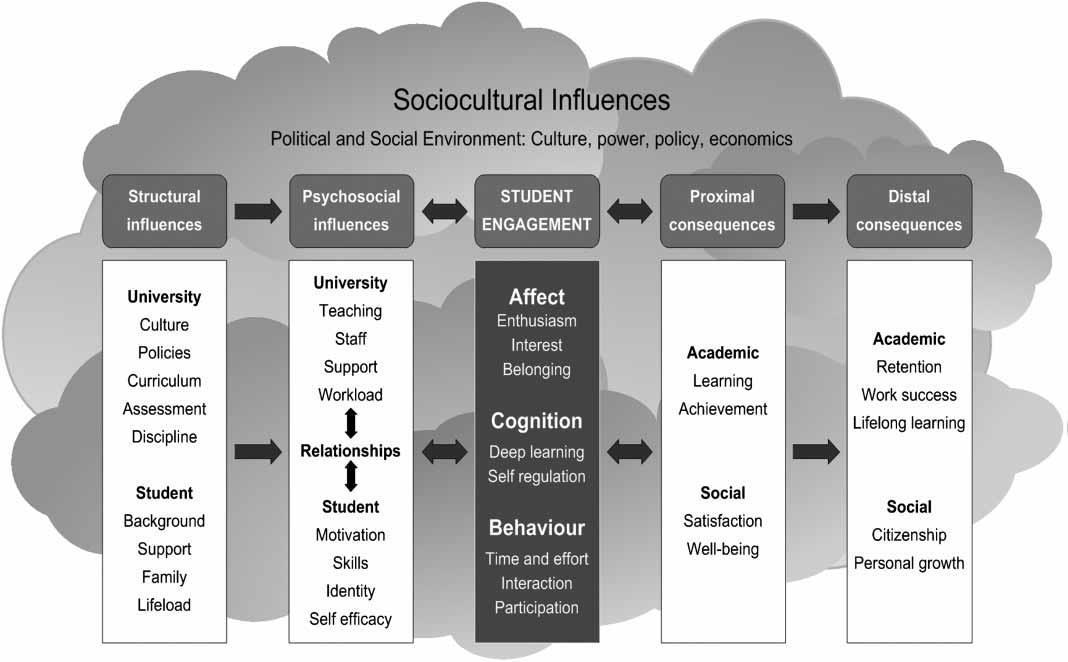Jan Nedermeijer
Students as Partners—Good for Students, Good for Staff: A Study on the Impact of Partnership Working and How This Translates to Improved Student-Staff Engagement
In the article of Roisin Curran the results of the research study are presented about the impact of Student as Partner on the individual staff and student participants involved and the influence how they engage in their education activities. In this summary, the theoretical framework and the main conclusions are presented. The complete article is published in the International Journal for Students as Partners (IJSaPcan): https://mulpress.mcmaster.ca/ijsap/issue/view/318
Theoretical framework
'In this paper, 'Student as Partners' is situated within the broad term Student Engagement and is viewed as a process or a concept in which to frame collaborative working between students and staff for the mutual benefit of enhancing learning and teaching. The focus for the research under discussion here is on an aspect of Student Engagement—staff and student relationships—defined as “psychosocial influences” in Kahu’s model of socio-cultural influences on Student Engagement (Kahu, 2013, p. 766), represented in Figure 1.
Kahu, E. R. (2013) Framing student engagement in higher education. Studies in Higher Education. 38 (5), 758–73.

Kahu (2013) places the student at the centre, as depicted by the centre column, and includes the three dimensions of Student Engagement representing the psychological: affect, cognition, and behaviour. In order to highlight the impact of sociocultural factors, the two columns on the left side of the figure represent the influencing factors, or antecedents, of the university and of the student. The psychosocial influences, which include university and student attributes and the relationships between them, are depicted as having a clear impact on Student Engagement and as being influenced by Student Engagement. The double-sided arrows between these two columns draw attention to this. In other words, the building of relationships between staff and students can influence SE, and SE can further build relationships. The consequences of Student Engagement are depicted by the two columns on the right side of the figure and are divided into what happens in academic and social spheres (also identified by Tinto, 1987, and Thomas, 2012). Again, the double-sided arrow between the central column and the proximal consequences indicate that student success or deep learning and the feeling of well-being may further influence Student Engagement, which in turn may result in more distal consequences such as retention and a disposition for lifelong learning and active citizenship.
Cognisant of my role (Curran) as an academic developer in building staff and student capacity to engage, the overarching question this study attempts to address is:
What is the impact of Student as Partner on the individual staff and student participants involved and to what extent does this influence how they engage?
Curran had semi-structured interviews. The trigger questions were:
- 'How do you feel about staff student partnerships?
- Has the development of the staff student partnership in which you are involved presented any opportunities and/or challenges? If so, could you describe them?
- Have you seen any differences in the way you interact with staff/students since the partnership was introduced? If so, could you describe them?
- Has the staff student partnership changed your approach to your studies/teaching practice? If so, how?
- Any further comments?’
Conclusions
‘Although the sample size in this study is small and from a single institution, thereby limiting generalisability of the findings, there is evidence that
- the personal development of both students and staff is a welcome outcome of partnership working and one which has the potential to enhance skills, motivation, and self-efficacy of not just students but staff, too.
- In turn, this personal development can enhance the learning climate, which is important for extending the benefits of partnership working to students beyond the small numbers that tend to put themselves forward. ‘
‘The stage of curriculum design or re-design may be an opportune time for institutions to embed these enhanced learning climates resulting from a Student as Partner ethos. Further key implications from this study in relation to Student as Partner as a process or ethos of Student Engagement involves how we conceptualize Student Engagement’.
‘Using Kahu’s (2013) conceptual framework can overlook the potentially transformative impact of the personal development of staff as a result of adopting a Student as Partner approach. Recognizing the three inter-related dimensions of Student Engagement can allow institutions to better support staff and students to develop relational partnerships.
It is also important to recognize that how staff and students are feeling can act as a catalyst for change in thinking and behaviours. Further additional research needs to be conducted, particularly that which conceptualises Student Engagement from both a student and staff perspective, recognising its three dimensions, and the role that Student as Partners plays in building capacity for change.
Continuing this research is imperative for developing an evidence base on scaling successful partnership working in specific contexts to an institutional level so that we are prepared for more diverse and increasing student populations’.
